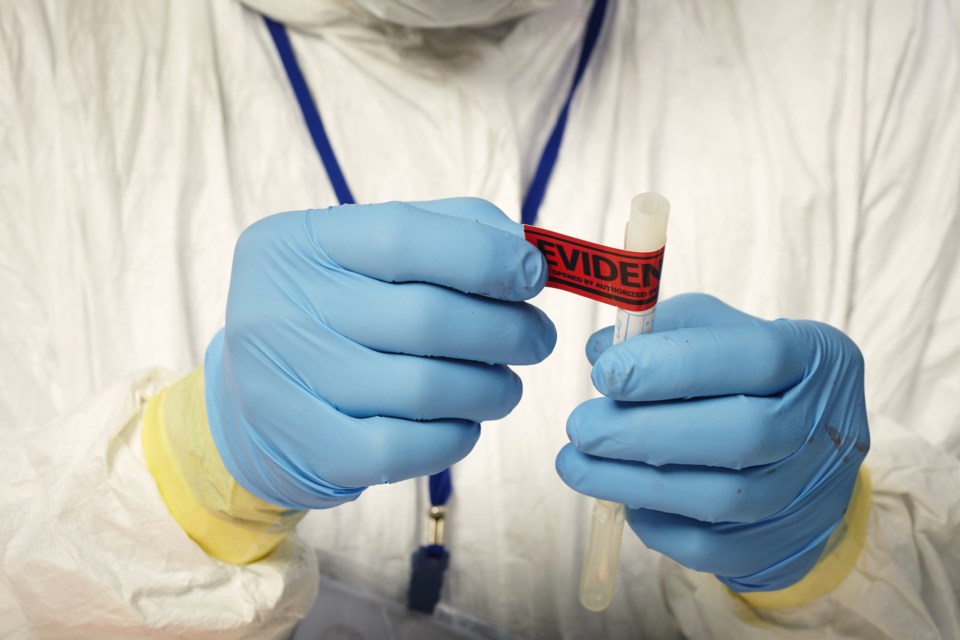It was advancements in DNA technology which finally brought closure to the family of Christine Jessop, who was killed at the age of nine in 1984.
Wrong turns in the case in Durham Region originally led to the conviction of Guy Paul Morin and then his eventual exoneration. But for most of his adult life, he lived under a cloud of suspicion. Last fall’s revelation that DNA testing determined the real killer to be a neighbour — now dead — finally lifts that cloud.
A similar approach focusing on genealogical analysis of DNA broke the lid off the Golden State Killer series of murders and rapes in the United States in 2018.
Joseph James DeAngelo, a former police officer, pleaded guilty to 13 murders and was believed to be responsible for more than 50 rapes and dozens of burglaries in California between 1974 and 1986.
New technology is often applied to long, lingering cases which have stumped investigators for years. Yet often just a missing puzzle piece will make the difference.
In the Barrie area, there are outstanding cases that investigators continue to work on, in hopes that a new tip, a different approach, an overlooked element newly discovered or a new technological tool will help to finally crack the case wide open.
In Barrie, city police now have access to an expanded forensics area in its new headquarters on Fairview Road, designed specifically to process evidence gathered at any crime scene. Police say that allows members of its forensics identification unit to conduct sensitive work in a modern environment.
Investigators can also draw on its domestic abuse, data crimes and tech crimes units to assist in homicide investigations.
And outside expertise is also relied upon when needed, including from other police services.
But sometimes it’s simply taking a different approach that makes the difference.
“It comes down to that investigative team. Sometimes you have to step out of that standard box and come up with some creative ideas as to how to get that information that you require and solve those cases,” said Barrie police homicide unit detective John Brooks.
An example of that in Barrie was the so-called 'Mr. Big' sting operation city police used to charge longtime suspect Andrew Keene in the 2007 killing and dismemberment of Alexandra Flanagan. Her remains were found scattered at different locations in the city. Keene is now serving a life sentence with no chance of parole for 17 years.
When it comes to applying today’s new tools to the crimes of yesterday, the trick is knowing when and how to use them, said Alex Fishbein, recognized as an early adopter of computer technology within the law enforcement environment who now works as an investigator in the private sector and teaches advanced computer investigation techniques at Mohawk College.
“There’s tremendous stuff out there and the first hurdle is knowing it may contain valuable evidence,” he said.
The technological advances in forensic investigations have increased to such a great degree in recent years that it has spawned experts in a variety of different areas to which detectives can turn. A footprint today can be created digitally so investigators examine much more than the pattern a sole makes in the dirt or snow.
He points to developments like the Internet of Things allowing devices like the FitBit activity tracker, which can provide exact time of death.
Open-source intelligence allows investigators to collect, analyze and make decisions about data accessible in publicly available sources. In the investigation of the Jan. 6 attack on the US Capitol detectives matched online chat, picture and video posts by people using handles to social media profiles and other information available online to track down many of the participants.
And cellphones can provide a wealth of information as well.
All that technology, the advancements, devices and the various forms of communications creates a great deal of noise through which investigators must sift, and that takes time, said Brooks of the Barrie police homicide unit.
And while advancements, like those in DNA, can lead to some investigations to remarkable conclusions, when it comes right down to it, say the investigators, nothing matches good ol' fashioned police work. A fresh set of eyes and a new perspective on an old case, for instance, can wield new results, just like new developments in technology.
“When somebody investigates a cold case, they really re-investigate the case. It is what they do with the knowledge and technology and everything that they have presently,” said Fishbein. “But a lot of cases depend on the witnesses and their recollections and those things fade over periods of time.
“You look for things that may have not been done that could be done.”
